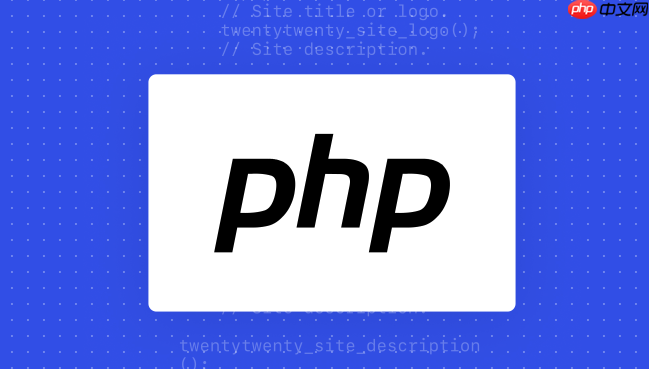利用var_export()将数组转为PHP代码并写入文件,可通过include直接加载,效率高且无需额外解析。

将PHP数组持久化到PHP文件并能被
include
var_export()
.php
include
说实话,每次遇到这种要把动态数据“固化”成配置文件的场景,我脑子里首先跳出来的就是
var_export()
.php
include
require
具体操作上,我们需要几个步骤:
$config
var_export($config, true)
true
var_export
<?php
<?php return
var_export(...)
;
include
file_put_contents()
file_put_contents()
file_put_contents()
这是一个简单的例子:
立即学习“PHP免费学习笔记(深入)”;
<?php
$myArray = [
'database' => [
'host' => 'localhost',
'port' => 3306,
'user' => 'root',
'password' => 'secret',
'dbname' => 'my_app_db'
],
'app' => [
'name' => 'My Awesome App',
'version' => '1.0.0',
'debug_mode' => true
],
'features' => ['comments', 'notifications', 'search']
];
$filePath = __DIR__ . '/config.php'; // 假设在当前目录下生成
// 生成可执行的PHP代码
// 注意:var_export 会将字符串中的特殊字符转义,如单引号、反斜杠等,确保安全性
$arrayContent = var_export($myArray, true);
// 构建最终的文件内容
// 使用 return 语句,使得 include/require 该文件时能直接得到数组
$fileContent = "<?php\n\nreturn " . $arrayContent . ";\n";
// 写入文件
if (file_put_contents($filePath, $fileContent) !== false) {
echo "数组已成功写入到 " . $filePath . "\n";
} else {
echo "写入文件失败!请检查目录权限。\n";
}
// 之后,你可以这样加载它:
$loadedConfig = include $filePath;
echo "<pre>";
print_r($loadedConfig);
echo "</pre>";
?>这种方式的好处是,
config.php
var_export
json_encode
serialize
这个问题问得好,每次我跟同事讨论数据持久化,总有人会提JSON或者序列化。确实,
json_encode
serialize
var_export
优势分析:
var_export
include
json_encode
json_decode
serialize
unserialize
config.php
以上就是php如何将数组写入php文件并能被include php数组持久化为配置文件方法的详细内容,更多请关注php中文网其它相关文章!

PHP怎么学习?PHP怎么入门?PHP在哪学?PHP怎么学才快?不用担心,这里为大家提供了PHP速学教程(入门到精通),有需要的小伙伴保存下载就能学习啦!

Copyright 2014-2025 https://www.php.cn/ All Rights Reserved | php.cn | 湘ICP备2023035733号